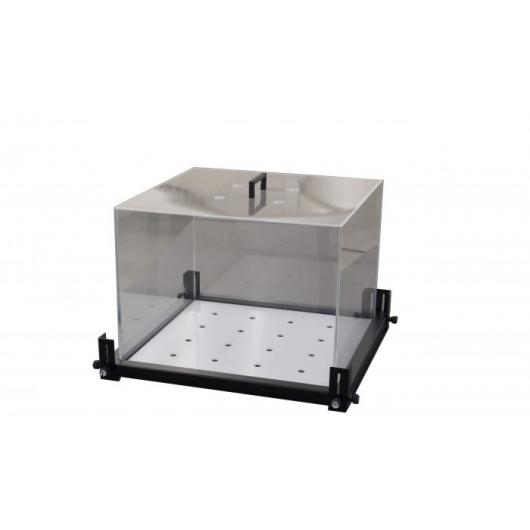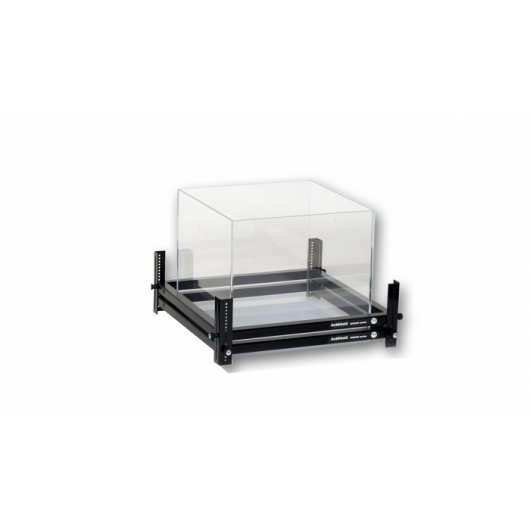


ActiMot2
Features
- Flexible use for different arenas
- Activity detection in three dimensions (X-Y-Z axis)
- Up to 2 rearing levels
- High spatial and temporal resolution
- Detailed comprehensive numerical and graphical analysis
Application
- Activity
- Exploration
- Anxiety
Modules
- Hole Board
- Light-Dark Test
- Open Field
- Place Preference
The multi-purpose ActiMot system registers animal movement in a homecage or a special arena with a 3-dimensional grid of light-beam sensors. Horizontal and vertical movements are reliably detected with high spatial and temporal resolution.
ActiMot is available for Open Field experiments to study spontaneous activity, exploration, and anxiety (ActiMot2). Square-shaped light-beam frames in two sizes with up to two additional rearing levels are combined with Open Field arenas for rats and mice. The dedicated ActiMot “Advanced” software with more than 100 integrated results parameters is customized with various inbuilt options, including definition of regions of interest and detection thresholds to finetune activity and speed parameters. Hole Board floors to study exploration, Light-Dark inserts for tests on unconditioned anxiety and Place Preference arenas to evaluate the aversive/addictive properties of drugs are available as optional components.
ActiMot can be also configured to study long-term activity in homecages under stress-free conditions with the PhenoMaster platform (ActiMot3).
Castañeyra-Ruiz L, Castañeyra A, González-Santana A et al. Combining the lack of chromogranins with chronic L-DOPA treatment affects motor activity in mice. Cell Tissue Res 2020; 380: 59–66
Cruces-Solis H, Nissen W, Ferger B, Arban R. Whole-brain signatures of functional connectivity after bidirectional modulation of the dopaminergic system in mice. Neuropharmacology 2020; 178: 108246
Talamonti E, Sasso V, To H, Haslam RP, Napier JA, Ulfhake B, Pernold K, Asadi A, Hessa T, Jacobsson A, Chiurchiù V, Viscomi MT. Impairment of DHA synthesis alters the expression of neuronal plasticity markers and the brain inflammatory status in mice. FASEB J 2020; 34(2): 2024-40
Varshney MK, Yu NY, Katayama S, Li X, Liu T, Wu WF, Töhönen V, Krjutškov K, Kere J, Fan X, Inzunza J, Gustafsson JÅ, Nalvarte I. Motor Function Deficits in the Estrogen Receptor Beta Knockout Mouse: Role on Excitatory Neurotransmission and Myelination in the Motor Cortex. Neuroendocrinology 2021; 111: 27-44



